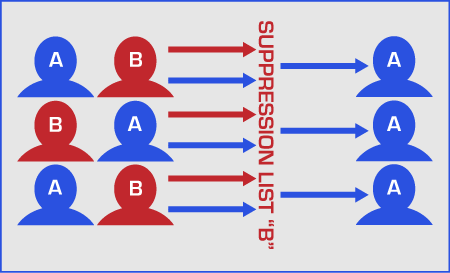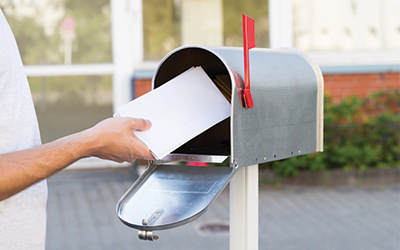Direct mailers, email senders, and telemarketers are all suppressing something. Or at least they should be. Though millions of potential recipients are readily available it’s typical that only a selection from them are good candidates to be contacted. There are a number of good reasons why this is so, some are legal while some are just good business. That’s why suppression lists exist. They act as a filter, eliminating records from a master list according to specific parameters. The result is a list of records for which contact is both permitted and desirable. The suppressed records then become a new list, used for future suppression or appropriate contact.
Compliance: What Senders MUST Suppress
The CAN-SPAM Act of 2003 (updated in 2008) requires that senders of commercial emails provide a functioning opt-out mechanism by which email recipients can unsubscribe their email address from future email messages. The result is a suppression list that must be followed so that those who have opted out will not receive further emails from that sender. Failure to comply can result in enforcement actions brought by the FTC.
DMA Do-Not-Mail Suppression lists help mailers, senders and telemarketers avoid mailing to uninterested recipients by suppressing the records of individuals who have registered with the Direct Marketing Association (DMA) to opt-out from receiving advertising mail.
FTC and State Do Not Call Registries offer consumers the opportunity to register their phone numbers and report abuse. Sellers, telemarketers and service providers subject to the regulations can subscribe to the registry to obtain the suppression list of private and business phone numbers.
Efficiency: What Senders WANT to Suppress
Less Is More. Following are some good reasons to employ accurate suppression lists to ensure that your offer reaches those to whom it is both welcome and relevant. Reputable, full service data firms can provide the necessary data processing techniques.
Clients and consumers may be on multiple lists. More than one recipient may reside at the same address. In any case, duplication equals annoyance and waste.
Prospects may have responded in some way to outreach and assigned to the sales team for follow up. Avoid stepping on your sales force’s toes!
If a business or nonprofit is location sensitive, movers who have left the area should be suppressed. This can be true for states, municipalities and zip codes.
Marketing fatigue can set in when prospects have been mailed too often. Recency and frequency can be minimized – and therefore optimized – depending on the nature of the business. The final weeks leading to an election require a different drip approach than retirement planning.
More examples of non-responsive populations are the Deceased Do Not Contact list provided by the DMA, those who are currently incarcerated, or those in nursing homes. All seem obvious but can be easily overlooked.
Then of course there is the business and environmental cost of duplication, over-mailing, and other mailing list cleaning issues. Wasteful use of resources both natural and financial can be avoided through the smart use of suppression lists. Paper, printing, postage, fuel, data charges and organizational friction costs can all be saved.
Less Is More
Let’s put all this in the simplest terms. Business citizenship matters. Likeability matters. Efficiency matters. The guidance any business may need is there for the asking. By obeying the law and observing common sense principles, the direct marketing community can continue to have a good and profitable relationship with businesses and the public via the direct mail, email, and telemarketing channels.




